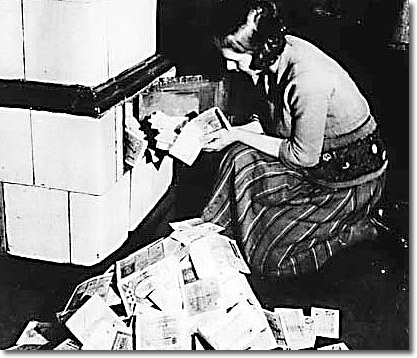The Fed s hidden agenda behind moneyprinting
Post on: 13 Август, 2015 No Comment

Getty Images
The markets were surprised when the Federal Reserve did not announce a tapering of the quantitative easing bond buying program at its September meeting. Indeed, its signal to the market that it was keeping interest rates low was welcome, but there may be a hidden agenda.
Since it began in late 2008, QE has spurred a vigorous debate about its merits, both positive and negative.
On the positive side, the easy money and low interest rates resulting from quantitative easing have been a shot in the arm to the economy, fueling the stock market and helping the housing recovery. On the negative side, The Fed accomplished QE by printing money to buy Treasurys, and through the massive power of its purchases drove interest rates to record lows.
But in the process, the Fed accumulated an unprecedented balance sheet of more than $3.6 trillion which needs to go somewhere, someday.
But we know all this.
I believe that one of the most important reasons the Fed is determined to keep interest rates low is one that is rarely talked about, and which comprises a dark economic foreboding that should frighten us all.
Let me start with a question: How would you feel if you knew that almost all of the money you pay in personal income tax went to pay just one bill, the interest on the debt? Chances are, you and millions of Americans would find that completely unacceptable and indeed they should.
But that is where we may be heading.
Thanks to the Fed, the interest rate paid on our national debt is at an historic low of 2.4 percent, according to the Congressional Budget Office.
Given the U.S.’s huge accumulated deficit, this low interest rate is important to keep debt servicing costs down.
But isn’t it fair to ask what the interest cost of our debt would be if interest rates returned to a more normal level? What’s a normal level? How about the average interest rate the Treasury paid on U.S. debt over the last 20 years?
That rate is 5.7percent, not extravagantly high at all by historic standards.
So here’s where it gets scary: U.S. debt held by the public today is about $12 trillion. The budget deficit projections are going down, true, but the United States is still incurring an annual budget deficit by spending more than we take in in taxes and revenue.
The CBO estimates that by 2020 total debt held by the public will be $16.6 trillion as a result of the rising accumulated debt.
Do the math: If we were to pay an average interest rate on our debt of 5.7 percent, rather than the 2.4 percent we pay today, in 2020 our debt service cost will be about $930 billion.
Now compare that to the amount the Internal Revenue Service collects from us in personal income taxes.
In 2012, that amount was $1.1 trillion, meaning that if interest rates went back to a more normal level of, say, 5.7 percent, 85 percent of all personal income taxes collected would go to servicing the debt. No wonder the Fed is worried.
Some economists will also suggest that interest rates may go much higher than 5.7 percent largely as a result of the massive QE exercise of printing money at an unprecedented rate. We just don’t know what the effect of all this will be but many economists warn that it can only result in inflation down the road.
As of today, interest rates are rising, and if this is a turning point, it is a major one.
Rates in the U.S. peaked in 1980 (remember the 14 percent Treasury bonds?) so if we are at the point of reversing a 33-year downward trend, who wants to predict how this will affect the economy?
One thing is clear: Based on CBO projections, if interest rates just rise to their 20-year average, we will have an untenable, unacceptable interest rate bill whose beneficiaries are China, Japan, and others who own our bonds.
And if Americans find out that the lion’s share of their income tax payments are going to service the debt, prepare for a new American revolution.
Peter J. Tanous is president of Lepercq Lynx Investment Advisory in Washington D.C. He is the co-author (with Arthur Laffer and Stephen Moore) of The End of Prosperity (2008), and co-author (with CNBC.com’s Jeff Cox) of Debt, Deficits, and the Demise of the American Economy (2011).














